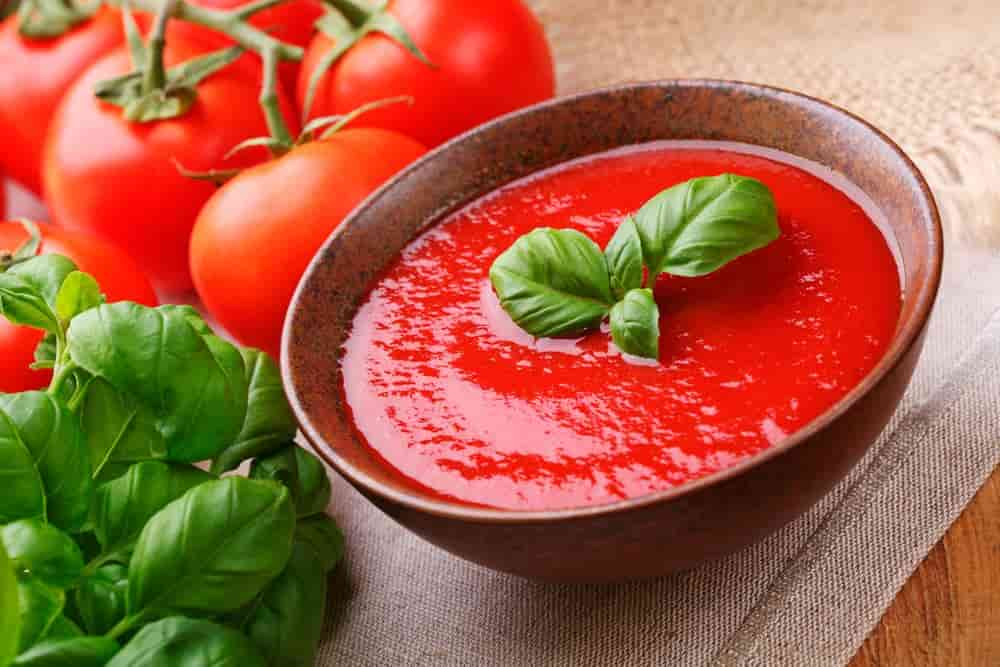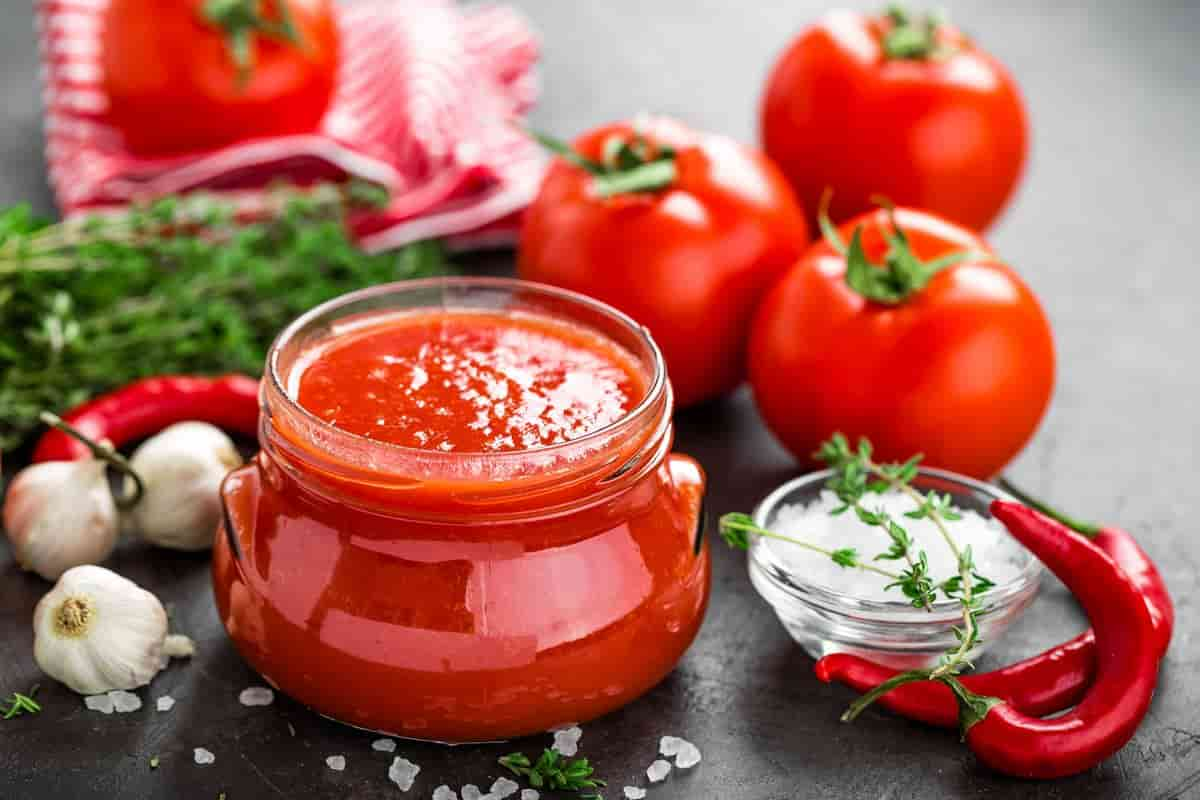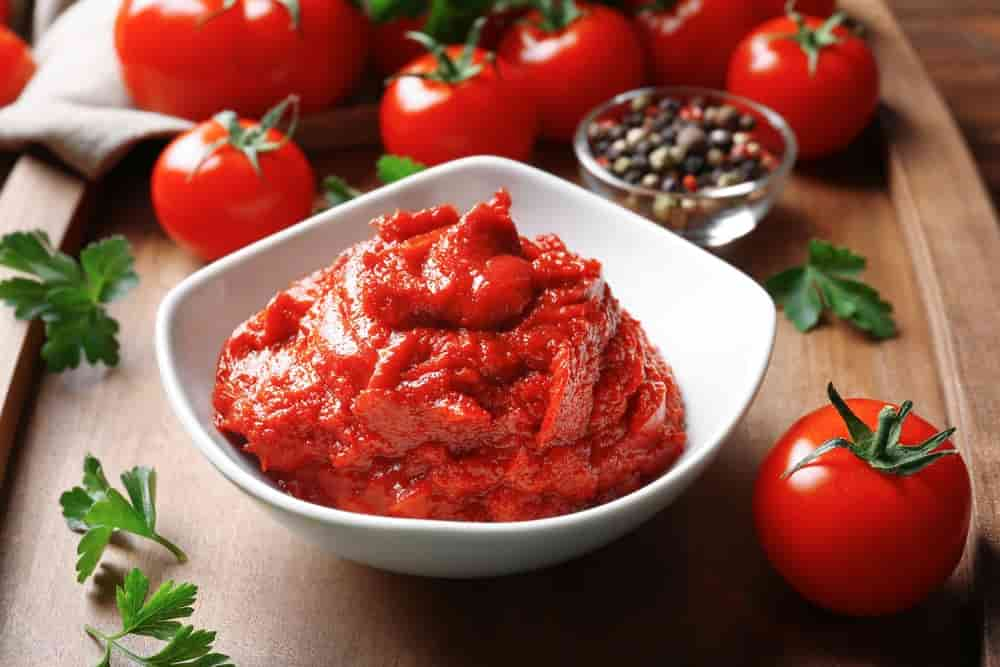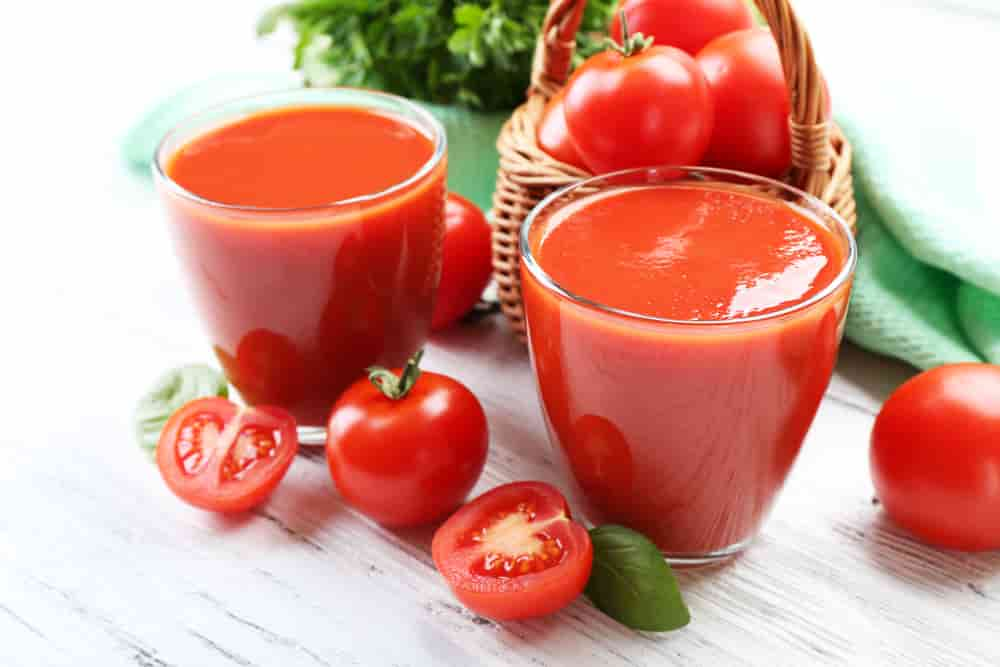Although you might be tempted to use pizza or pasta sauce directly from the jar, or even you use tomato puree in it, we find that the majority of commercial sauces are much too watery which is exactly based on our preferences, which results in pizza centers that are disappointing and soggy.
We believe that it is well worth the effort to prepare a batch of this extra-thick homemade sauce.
If chewy, crispy-bottomed pizza crust is your jam (it certainly is ours), then the extra time it takes to make a batch of this sauce is well worth it.
When all is said and done, the consistency of this extra-thick pizza sauce is probably closer to the paste end of the spectrum than it is to the sauce end of the spectrum since it lies somewhere in the middle between tomato sauce and tomato paste.
Because the taste is so potent, you really only need a few spoonfuls on your pizza (2–3 tablespoons is just about right for a 9-inch pizza that serves two people); this small number packs the same amount of flavor as a larger quantity, but without the additional liquid.

When it comes to seasoning, all you need is a little amount of garlic that has been sautéed in olive oil, some salt, pepper, and dry Italian herb spice to help bring out the taste of the tomatoes even more.
If you combine this with our go-to recipe for pizza crust and a wide variety of toppings that you select, you are in for an evening of absolutely amazing pizza.
The base of our homemade pizza sauce is either canned tomatoes that have been strained or pureed tomatoes (sometimes labeled tomato passata).
We gave it a go with crushed tomatoes that we had ourselves pureed, and while it does work, the consistency isn’t quite as thick and luxurious as the sauce that was made with tomato passata (which is already velvety smooth to begin with).
About one cup of extra thick pizza sauce can be made from three cups of tomato passata, which equals one jar of 24 ounces.
We find that approximately two to three teaspoons is the ideal amount for a 9-inch pizza; hence, one batch may easily produce enough for six pizzas.

This identical recipe can also be used to produce a fantastic pasta sauce; to do so, simply simmer the sauce for around half the allotted cooking time or until it reaches the desired consistency, yielding approximately 1.5 to 2 cups of sauce.
You can see in this picture how much the sauce is reduced after it has been simmered for around 45 minutes on low heat.
Pro tip? Even though it might seem excessive for only 3 cups of liquid, you should use the largest and tallest saucepan you own for this recipe. In this instance, we utilized our 8-quart pasta pot.
Because the tomato combination is so thick, it will splatter all over your clothing, as well as your hands and the surfaces (and sometimes even your cabinets). Stick with a large pot that is tall and make sure to use the longest spoon or spatula you own to stir it constantly while it thickens. This will help keep the mess to a minimum.
In addition, if you have a mesh splatter shield tucked away in the back of your cabinet, now is the time to get it out and put it to good use.
You are free to freeze any sauce that you do not expect to use within the next week or so. My preferred method is to place the sauce in a plastic bag, evenly distribute it throughout the bag’s whole surface, and then use a chopstick to press down on the bag so order to effectively divide the sauce into equal amounts.
This makes it quite simple to break out just one amount of sauce, which you can subsequently allow to defrost in the refrigerator overnight or on the defrost option of your microwave (cover the dish with a paper towel to avoid any splattering).

Put the olive oil in a big stockpot or saucepan with high sides and start it heating up over medium heat.
When the garlic is aromatic and sizzling, add it to the pan along with the Italian herbs and stir continuously for approximately a minute.
Pour the tomatoes in with caution. Add salt and pepper.
After around forty-five minutes, decrease the heat to a simmer and let the sauce reduce until it begins to look more like tomato paste. During this process, stir the sauce often to prevent it from splattering too much.
When the sauce has been reduced to its full potential, you should have around one cup of a very thick sauce. After getting a taste, season to taste with additional salt and pepper.
If you want your pasta sauce on the runnier side, decrease the liquid by only about half as much as normal and simmer it for an additional 20 to 30 minutes, or until you have approximately 1.5 to 2 cups of sauce.
The sauce can be stored in the refrigerator for up to 7 days. Any remaining sauce can be stored in the freezer for up to six months in an airtight bag or container.
This authentic and simple recipe for pizza sauce calls for only a few pantry staples as its ingredients.
In an effort to make this meal as healthy as possible, I did not add olive oil. Not exactly; I’m just trying to maintain some kind of equilibrium by reserving those additional calories for the cheese on my pizza. In my home, we can’t get enough of cheesy pizza.
Because there is no actual cooking involved in the preparation of this dish, I find that involving my daughter is a great way to introduce her to the joys of working side-by-side with me in the kitchen.

I arrange the ingredients, and then I let her get to work combining them. Since pizza is one of her favorite foods, it is only fitting that she learn how to make it since it is one of her favorites.
This sauce is so versatile that I use it not just for pizza recipes but also for pasta meals, meatballs, and every other Italian dish you can think of. I do not restrict its use to pizza alone. I really enjoy how flavorful the sauce is as well as how thick it is. I’m sure you would as well!

Your comment submitted.